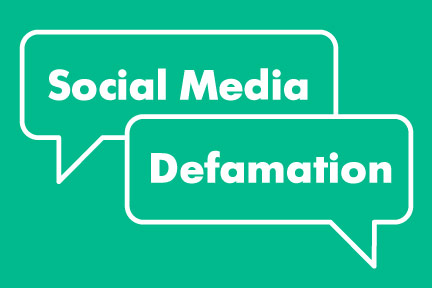Blog
CLARIFICATION OF CALIFORNIA’S ANTI-SLAPP LAW AND IMPACT ON INTERNET AND SOCIAL MEDIA SPEECH
Posted: June 15, 2018 |
A recent decision of the California Second District Court of Appeal clarified an unresolved issue in California’s anti-SLAPP law. (Cal. Code Civ. Proc. §425.16.) A special anti-SLAPP motion to strike (i.e., dismiss) is a procedural device in California. The statute allows the defendant to file a special motion to strike a complaint filed against him or her based on an "act in furtherance of [his/her] right of petition or free speech under the United States or California Constitution in connection with a public issue." (Cal. Code Civ. Proc. §425.16.) If a court rules in your favor, it will dismiss the plaintiff’s case early in the litigation and award you attorneys' fees and court costs. A successful motion can obviate spending many thousands of dollars in defense costs if the case lacks merit.
The recent case was Bel Air Internet, LLC v. Morales (2018) 20 Cal.App.4th 924. Prior to Bel Air Internet, it was unsettled whether the moving party (a defendant or cross-defendant) must file declarations establishing the factual basis for the plaintiff’s claims in order to establish that the claims arise out of protected activity. The court held that the moving party need not submit declarations for this purpose, and its reasoning applied common sense and careful parsing of the statute.
The plaintiff in Bel Air Internet asserted causes of action for (1) intentional interference with contractual relations; (2) breach of contract; (3) breach of the implied covenant of good faith and fair dealing; and (4) conversion (against one defendant only). The complaint alleged that defendants, who were plaintiff’s former employees, had solicited and induced other employees to resign and bring litigation against the plaintiff company. Defendants denied the allegations and also claimed that their actions were protected activity under the California anti-SLAPP statute.
The plaintiff opposed the motion, arguing that defendants were required by CCP §425.16 to support their anti-SLAPP motion with evidence in order to meet their burden under the first prong of the statute (that the causes of action arise out of protected activity). The defendants, on the other hand, argued that the court could consider solely the pleadings in determining whether the claims arose from protected activity. The court of appeal rejected both parties’ arguments.
The court, instead, held that “when the complaint itself alleges protected activity, a moving party may rely on the plaintiff’s allegations alone in arguing that the plaintiff’s claims arise from an act ‘in furtherance of the person’s right of petition or free speech.’” The court reasoned:
While section 425.16 requires a court to consider both the ‘pleadings’ and the ‘supporting and opposing affidavits stating the facts upon which the liability or defense is based’ (§ 425.16, subd. (b)(2)), it does not require a moving party to submit declarations confirming the factual basis for the plaintiff’s claims. Otherwise, a defendant who disputes the plaintiff’s allegations . . . might be precluded from bringing an anti-SLAPP motion. That would have the perverse effect of making anti-SLAPP relief unavailable when a plaintiff alleges a baseless claim, which is precisely the kind of claim that section 425.16 was intended to address. (See Baral v. Schnitt (2016) 1 Cal.5th 376, 384, 205 Cal.Rptr.3d 475, 376 P.3d 604 (Baral) [the anti-SLAPP statute ‘provides a procedure for weeding out, at an early stage, meritless claims arising from protected activity’].)”
The case has significance for all anti-SLAPP motions, but is especially relevant for defamation by anonymous speech, such as speech on the Internet or other social media, an increasingly common context for defamation and interference cases.
Typically, plaintiffs alleging defamation claims would argue that a defendant cannot simultaneously claim that his/her damaging statement (e.g., a reckless adverse restaurant review or a libelous Facebook post) is protected activity under the anti-SLAPP statute while hiding behind anonymity, denying that he/she had anything to do with the post. Plaintiffs would contend that the defendant must reveal his/her identity to ascertain whether the activity was protected speech for purposes of the first prong of the anti-SLAPP statute. The law was unclear before Bel Air Internet as to whether an anonymous publisher of defamatory matter could deny having anything to do with a post, while simultaneously claiming that his/her activity was protected under the anti-SLAPP statute.
After Bel Air Internet, the court’s reasoning removes this uncertainty. Though the case did not involve anonymous speech or Internet speech, the reasoning should apply to defamation or other actionable speech that is anonymous or otherwise without attribution. In addition, the case gives the moving party the ability to avoid committing facts to a declaration under oath; lawyers often prefer that their client not swear to facts early in a case. The moving party may instead rely on allegations in the complaint to establish that the case arises out of protected activity.
The attorneys at North & Nash, A Professional Law Corporation have extensive experience litigating special anti-SLAPP motions to dismiss. If you have questions about whether a claim or potential claim you are facing could be subject to an anti-SLAPP motion to dismiss, please contact us at (949) 752-2200.

